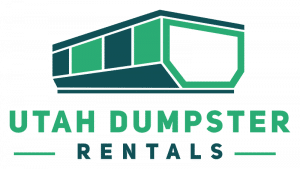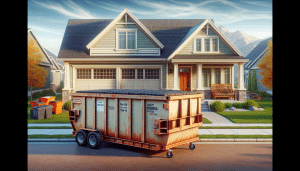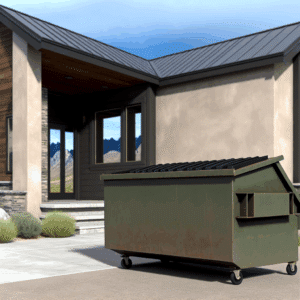Let’s be honest for a second. There is nothing—and I mean nothing—quite as overwhelming as standing in front of a mountain of junk or debris and realizing your regular trash can isn’t going to cut it. Maybe you’re finally tackling that basement renovation in Sandy, or perhaps your business in downtown Salt Lake City is undergoing a major face-lift. Whatever the project, the debris has to go somewhere.
You know what happens next. You decide to rent a dumpster. Simple, right? But then you look at the options and freeze. “Is a 10-yarder too small?” “Will a 30-yard bin take up my whole driveway?” It’s the classic Goldilocks dilemma, but instead of porridge, we’re talking about plaster, old shingles, and that broken recliner from 1998.
Choosing the wrong size is more than just an inconvenience; it hits your wallet. Go too small, and you’re paying for a second haul. Go too big, and you’re paying for air. At Utah Dumpster Rentals, we see this every day. We want to help you get it right the first time, so let’s walk through exactly how to figure out what you need without the headache.
Contents
- 1 The “Pickup Truck” Rule of Thumb
- 2 The 10-Yard Dumpster: Small but Mighty
- 3 The 15-Yard Dumpster: The “In-Between” Solution
- 4 The 20-Yard Dumpster: The Homeowner’s Favorite
- 5 The 30-Yard Dumpster: For the Big Leaguers
- 6 The 40-Yard Dumpster: The Beast
- 7 Weight vs. Volume: The Hidden Trap
- 8 Space and Placement Logistics
- 9 How to Pack Like a Pro
- 10 Still Not Sure? Let’s Talk.
The “Pickup Truck” Rule of Thumb
Before we get into the nitty-gritty of specific dimensions, let’s try to visualize volume. Most people can’t look at a pile of drywall and scream, “That’s exactly 14 cubic yards!” It just doesn’t work that way. Our brains aren’t wired for it.
Here’s the thing: the easiest way to estimate volume is by thinking in terms of pickup truck beds. A standard pickup truck bed holds about two cubic yards of material if it’s loaded level with the sides.
So, if you look at your pile of junk and think, “I could probably move this in five truck trips,” you have about 10 cubic yards of waste. If it looks like ten trips, you’re looking at 20 yards. This isn’t an exact science—because who packs a truck perfectly?—but it gets you in the ballpark.
The 10-Yard Dumpster: Small but Mighty
Don’t let the “small” label fool you. The 10-yard dumpster is a workhorse, especially for heavy materials. If you are in Ogden doing some landscaping or tearing up a concrete patio, this is usually your best friend.
Best used for:
- Heavy debris: Concrete, dirt, asphalt, or brick.
- Small remodeling jobs: A single bathroom renovation or a small kitchen tear-out.
- Garage cleanouts: Getting rid of the clutter in a standard two-car garage.
- Roofing: Shingles from a small roof project (around 1,500 sq ft).
Why is this size so popular for heavy stuff? Weight limits. Even the biggest trucks have limits on what they can lift and haul safely down Utah roads. If you fill a massive bin with concrete, we literally might not be able to pick it up. The 10-yarder keeps the weight manageable so we can haul it away without a hitch.
The 15-Yard Dumpster: The “In-Between” Solution
Sometimes a 10-yarder feels a bit tight, but you don’t have enough junk to justify the jump to a 20-yarder. That’s where the 15-yard bin comes in. It’s perfect for those medium-sized projects where you want a little breathing room.
Think of this as the ideal size for a serious spring cleaning or a basement cleanout in Layton where you’ve been storing stuff for a decade. It holds roughly 6 pickup truck loads of waste. It’s compact enough to fit in most driveways without dominating the entire property, which is a huge plus if you’re in a tighter neighborhood.
The 20-Yard Dumpster: The Homeowner’s Favorite
If there were a popularity contest for dumpsters, the 20-yarder would win, hands down. It is the industry standard for a reason. It’s versatile. It’s big enough to handle bulky furniture but usually not so massive that it annoys the neighbors.
This size is typically right for:
- Large decluttering projects: Cleaning out a whole house before a move.
- Flooring removal: Ripping up carpet or hardwood in a large home.
- Deck removal: Dismantling a medium-to-large outdoor deck in Park City.
- Roofing jobs: Standard residential roof replacements.
Here is a tip: If you are on the fence between a 15 and a 20, lean toward the 20. The price difference is usually negligible compared to the cost (and frustration) of needing a second dumpster because you underestimated the bulk of that old sectional sofa.
The 30-Yard Dumpster: For the Big Leaguers
Now we are getting into serious territory. A 30-yard dumpster is tall. You aren’t just tossing a trash bag over the side of this one; you’re likely walking items in through the swinging back door.
These are common sights on construction sites in Orem or major home additions in Draper. If you are planning a full-home renovation, building an addition, or demolishing a garage, this is likely the size you need. It holds about 15 pickup truck loads.
Just keep in mind, because the walls are higher, it’s tougher to load heavy items over the side. You have to be strategic. You pack it like you’re playing a high-stakes game of Tetris to maximize the space.
The 40-Yard Dumpster: The Beast
This is the daddy of them all. The 40-yard dumpster is massive. We mostly rent these to commercial clients or homeowners dealing with extreme situations, like hoarders or full-scale demolition.
You generally do not want this for heavy materials like dirt or concrete. Why? Because if you fill 40 cubic yards with dirt, that bin will weigh so much it becomes an immovable object. This size is for volume, not density. It’s for bulky, lightweight trash—wood, drywall, siding, and household junk.
Weight vs. Volume: The Hidden Trap
Here is where people get tripped up. You look at a bin and think, “I have space, so I can keep filling it.” But dumpsters have weight limits.
Let’s say you are renting a bin in West Valley City for a landscaping project. You get a 30-yard bin because you have a lot of dirt. Bad move. You will hit the weight limit when the bin is barely a quarter full. For dense materials like concrete, dirt, sand, or asphalt, smaller is always better.
If you exceed the weight allowance, you get hit with overage fees. Nobody likes those surprise bills. If you are unsure about the density of your waste, just ask us. We can look at what you’re tossing and tell you if you’re in the danger zone.
Space and Placement Logistics
Have you measured your driveway lately? Most people haven’t. Before you order a 30-yard behemoth, you need to make sure it actually fits.
In places like Park City or the Avenues in Salt Lake, driveways can be steep, narrow, or virtually non-existent. If the truck can’t back in safely, we can’t drop the bin.
A few questions to ask yourself:
- Overhead clearance: Are there low-hanging tree branches or power lines? The truck needs height to lift the bin off the rails.
- Surface stability: Is your driveway asphalt or pavers? Heavy bins can crack soft surfaces, especially in the Utah summer heat. We recommend putting down plywood to protect the driveway.
- Street permits: If you can’t fit the bin on your property and need to put it on the street, you might need a permit from the city. This varies from Sandy to Ogden, so check local regulations first.
How to Pack Like a Pro
You’ve picked your size, the bin is in the driveway, and you’re ready to work. How you load the dumpster affects how much you can fit.
Don’t just throw things in willy-nilly. It creates air pockets—wasted space. Break down boxes. Flatten furniture if you can. Place the flat, heavy stuff on the bottom and layer the bulky, lighter stuff on top.
And a quick safety note: Do not fill the dumpster higher than the side walls. It’s illegal for us to haul a load that isn’t tarped securely. If debris is sticking up like a mohawk, the driver might refuse the pickup until you level it off. That’s a delay you don’t need.
Still Not Sure? Let’s Talk.
Honestly, looking at cubic yard measurements on a screen can only help so much. Sometimes you just need to describe your mess to a human being who has seen it all before. We have helped thousands of folks across the Wasatch Front figure out exactly what they need, from small garage cleanouts to massive commercial builds.
Don’t stress about the size. Let us handle the logistics so you can focus on the project. We are here to make this part easy for you.
Ready to get started? Give us a shout.




